I build a macOS app in swiftui
i try to create a listview where the first item is preselected. i tried it with the 'selected' state of the navigationLink but it didn't work.
Im pretty much clueless and hope you guys can help me.
The code for creating this list view looks like this.
//personList
struct PersonList: View {
var body: some View {
NavigationView
{
List(personData) { person in
NavigationLink(destination: PersonDetail(person: person))
{
PersonRow(person: person)
}
}.frame(minWidth: 300, maxWidth: 300)
}
}
}
(Other views at the bottom)
This is the normal View when i open the app.
 When i click on an item its open like this. Thats the state i want as default opening state when i render this view.
When i click on an item its open like this. Thats the state i want as default opening state when i render this view.

The Code for this view looks like this:
//PersonRow
struct PersonRow: View {
//variables definied
var person: Person
var body: some View {
HStack
{
person.image.resizable().frame(width:50, height:50)
.cornerRadius(25)
.padding(5)
VStack (alignment: .leading)
{
Text(person.firstName + " " + person.lastName)
.fontWeight(.bold)
.padding(5)
Text(person.nickname)
.padding(5)
}
Spacer()
}
}
}
//personDetail
struct PersonDetail: View {
var person : Person
var body: some View {
VStack
{
HStack
{
VStack
{
CircleImage(image: person.image)
Text(person.firstName + " " + person.lastName)
.font(.title)
Text("Turtle Rock")
.font(.subheadline)
}
Spacer()
Text("Subtitle")
.font(.subheadline)
}
Spacer()
}
.padding()
}
}
Thanks in advance!

